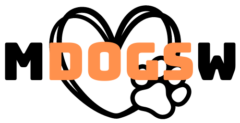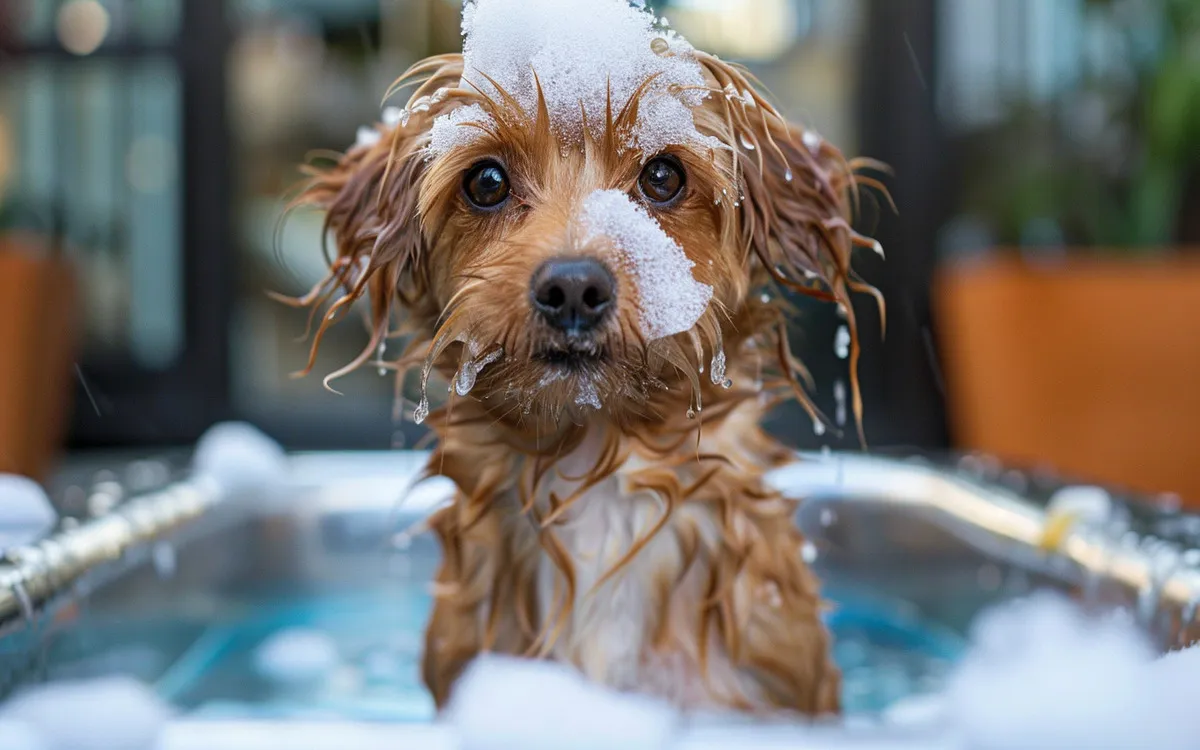Have you ever watched your dog’s reaction to bath time? Some pups perk up at the sight of a bubbly tub, while others do their best Houdini impression to escape the inevitable shampooing. This playful resistance raises an interesting question: Do Dog Grooming enjoy being groomed?
The Importance of Regular Grooming
Before we delve into the world of canine pampering, let’s establish the critical role grooming plays in your dog’s health and well-being. Regular grooming goes beyond a simple bath and brush. It’s a vital preventative measure that can:
- Enhance coat health: Brushing removes dirt, debris, and dead hair, promoting healthy skin and luxuriously soft fur.
- Prevent matting: Matted fur can be uncomfortable for your dog, trap moisture, and lead to skin infections. Consistent brushing keeps mats at bay.
- Early detection of skin problems: A thorough grooming session allows you to examine your dog’s skin for fleas, ticks, allergies, and other issues, enabling early intervention.
- Maintain hygiene: Regular bathing keeps your dog clean and fresh-smelling, reducing the risk of infections and unpleasant odors.
- Improved comfort: A clean and well-groomed coat feels better for your dog and helps regulate body temperature.
The “Like” Factor
You might be surprised to learn that many dogs actually enjoy being groomed, especially when it’s associated with positive experiences. Think about it gentle brushing can feel like a soothing massage, and a warm bath can be a relaxing spa treatment.
However, the truth is, there’s no one-size-fits-all answer to the question of whether Dog Grooming like being groomed. Several factors can influence their experience, which we’ll explore in the following sections.
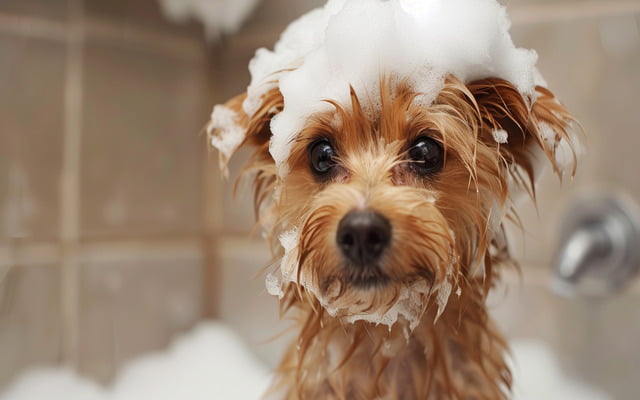
Understanding Dog Psychology
Dogs are descended from wolves, social creatures who engage in regular grooming behavior. Licking and cleaning each other strengthens social bonds within the pack. This innate Dog Grooming instinct might explain why some dogs seem to enjoy the gentle touch and attention received during grooming sessions.
Positive Reinforcement and Desensitization
The key to creating a positive grooming experience lies in positive reinforcement. Reward your Dog Grooming with treats, praise, and petting throughout the process. This helps them associate grooming with happy feelings.
However, some dogs may have had negative experiences with Dog Grooming in the past, leading to anxiety or fear. In such cases, desensitization can be a helpful technique. Gradually introduce grooming tools and sounds in a calm environment, pairing them with positive reinforcement.
Individual Preferences
It’s important to remember that every dog is an individual. Several factors can influence their response to grooming, including:
- Breed: Some breeds, like Poodles and Shih Tzus, require frequent Dog Grooming and are accustomed to it. Others, like Huskies and Beagles, have minimal grooming needs and may find extensive grooming sessions overwhelming.
- Temperament: Nervous or anxious dogs might find the sights, sounds, and sensations of grooming stressful. Patience and a gentle approach are crucial.
- Past experiences: As mentioned earlier, negative past experiences can lead to grooming anxiety. Positive reinforcement and desensitization can help overcome this.
By understanding these factors and tailoring your approach accordingly, you can create a grooming routine that your dog not only tolerates but perhaps even enjoys.
| Breed Group | Examples |
Grooming Needs
|
| High-Maintenance Coats | Poodle, Shih Tzu, Yorkshire Terrier |
Daily brushing, professional grooming every 4-6 weeks
|
| Double Coats | Husky, Golden Retriever, Labrador Retriever |
Brushing several times a week, professional grooming seasonally to remove undercoat
|
| Short-haired Breeds | Beagle, French Bulldog, Boxer |
Brushing once or twice a week to remove dead hair
|
Breed-Specific Dog Grooming Needs
A dog’s coat type plays a significant role in determining their grooming needs. Here’s a breakdown of some common coat types and how to care for them:
High-Maintenance Coats
These luxurious coats, often found on breeds like Poodles, Shih Tzus, and Yorkshire Terriers, require daily brushing to prevent matting. Regular professional grooming sessions (every 4-6 weeks) are crucial to maintain their signature style and prevent skin irritation.
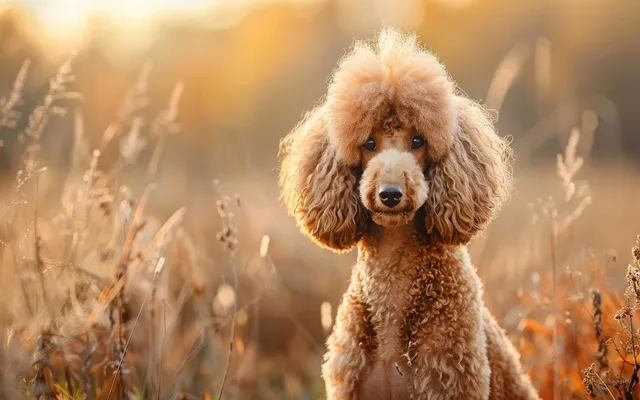
Double Coats
Huskies, Golden Retrievers, and Pomeranian are prime examples of double-coated breeds. They have a soft undercoat and a coarser outer coat. Regular brushing is essential to manage shedding and prevent the undercoat from matting. Professional grooming seasonally can help remove excess undercoat and keep your pup cool and comfortable.
Short-haired Breeds
Don’t be fooled by their short fur! Breeds like Beagles, French Bulldogs, and Boxers still benefit from regular brushing to remove dead hair and promote a healthy coat. While they might not require professional grooming as frequently as other breeds, consistent brushing helps minimize shedding and keeps their coat looking sleek.
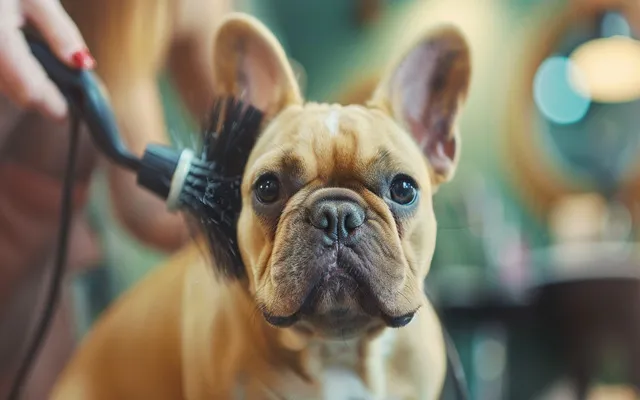
The Dog Grooming Process: Step-by-Step
Before you embark on your dog grooming adventure, ensure you have the right tools for the job. The specific tools you’ll need will depend on your dog’s coat type, but here are some essentials:
- Slicker brush: Ideal for removing loose hair and mats from all coat types.
- Pin brush: Great for detangling and smoothing longer coats.
- Undercoat rake: Effective for removing excess undercoat in double-coated breeds.
- Combs: A metal comb can be helpful for removing tangles and debris, especially from long or curly hair.
- Shampoo and conditioner: Choose a gentle, dog-specific shampoo and conditioner formulated for your dog’s coat type. Avoid human shampoos, which can irritate your dog’s skin.
- Nail clippers: Opt for clippers designed for dog nails and learn proper clipping techniques to avoid injuring your pup’s quick.
- Ear cleaner: Use a gentle ear cleaner recommended by your veterinarian to maintain healthy ears.
- Towels: Microfiber towels are absorbent and gentle on your dog’s fur.
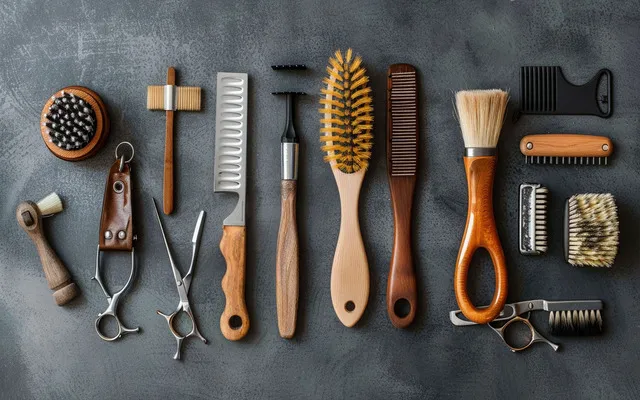
Brushing Techniques
Brushing is a fundamental part of any dog grooming routine. Here’s a basic guide to brushing different coat types:
1. Long Hair:
- Brush daily to prevent mats.
- Start at the ends and work your way up to the roots, section by section.
- A detangling spray can help with stubborn tangles.
2. Short Hair:
- Brush once or twice a week to remove dead hair and promote a healthy coat.
- Use a short-haired brush to capture loose fur efficiently.
3. Double Coat:
- Brush several times a week, focusing on removing the undercoat.
An undercoat rake can be a lifesaver during shedding seasons.
Advanced Dog Grooming Techniques
For specific breed styles like poodle clips or lion cuts, professional grooming expertise is highly recommended. Professional groomers have the experience and equipment to handle various coat types and achieve the desired look safely and efficiently.
Making Grooming a Positive Experience
Introducing grooming practices to your dog during their socialization stages is crucial. This helps them get accustomed to the sights, sounds, and sensations of grooming tools, making the process less stressful in the long run.
Positive Reinforcement
As mentioned earlier, positive reinforcement is key to creating a positive grooming experience. Here’s how to implement it effectively:
- Offer treats, praise, and petting throughout the grooming process.
- Focus on rewarding calm and cooperative behavior.
- Keep grooming sessions short and positive, especially for puppies or anxious dogs.
- End each session on a high note, with a treat and lots of love.
Create a Calm Environment
The environment plays a significant role in your dog’s grooming experience. Here are some tips:
- Choose a quiet and familiar location, free from distractions.
- Have all your grooming supplies ready beforehand.
- Speak in a soothing voice and maintain a gentle demeanor.
Respect Your Dog’s Limits
It’s important to recognize signs of stress in your dog, such as panting, whining, or trying to escape. If your dog becomes overly anxious, take a break and come back to grooming later. Forcing a grooming session can worsen their anxiety.
Conclusion
By understanding your dog’s individual needs and preferences, creating a positive grooming experience. And addressing any underlying anxieties, you can make grooming a stress-free and even enjoyable experience for both you and your furry friend.
FAQs
My dog seems to tolerate grooming but doesn’t enjoy it. How can I make it a more positive experience?
Even if your dog tolerates grooming, you can definitely make it more enjoyable! Here’s how:
- Turn it into a bonding experience: Talk to your dog in a soothing voice throughout the process, offer plenty of praise and petting, and end the session with a special treat or playtime.
- Focus on short, positive sessions: Don’t overwhelm your dog with lengthy grooming sessions. Start with short bursts of brushing or nail trimming, rewarding calm behavior, and gradually extend the duration as your dog becomes more comfortable.
- Make grooming a fun game: Use a lick mat with peanut butter or other dog-safe spread to distract your dog while you brush. You can also find interactive grooming toys that dispense treats while your dog gets brushed.
Is there a difference between grooming short-haired and long-haired dogs?
Absolutely! Here’s a breakdown:
- Short-haired dogs: While they might not require daily brushing, regular brushing is still crucial to remove dead hair, promote healthy skin, and minimize shedding. A short-haired brush designed to capture loose fur is ideal.
- Long-haired dogs: Daily brushing is essential to prevent mats and tangles. Use a combination of a slicker brush to remove loose hair and a detangling spray or comb to tackle knots gently. Professional grooming every 4-6 weeks is often recommended for long-haired breeds to maintain their style and prevent matting.
How often should I bathe my dog?
There’s no one-size-fits-all answer! Several factors influence how often you should bathe your dog:
- Breed: Some breeds, like Poodles, have coats that require more frequent bathing (every 4-6 weeks) to maintain their texture. Others, like Huskies, have naturally oily coats that might only need a bath a few times a year.
- Coat type: Double-coated breeds might benefit from more frequent baths during shedding seasons to remove excess undercoat. Short-haired dogs may need baths less often.
- Activity level: A dog who loves rolling in mud or frequently gets dirty might require more frequent baths than a less adventurous pup.
- Climate: If you live in a dry climate, your dog might not need baths as often as in a humid environment.
Are there any dog breeds that are hypoallergenic and require minimal grooming?
Yes! Here are a few options:
- Poodles: These intelligent and playful dogs have non-shedding coats that require regular brushing but minimal shedding. Professional grooming every 4-6 weeks is recommended to maintain their signature clips.
- Bichon Frise: These charming companions boast fluffy white coats that are hypoallergenic and require regular brushing to prevent matting. Professional grooming is typically needed every 4-6 weeks.
- Schnauzers: Schnauzers come in different sizes and have wiry coats that shed minimally. Regular brushing and professional grooming every 6-8 weeks help maintain their neat appearance.

Healthy dogs mean happy dogs, and that makes me happy! I’m here to share all the tips for keeping your best furry friend in top shape, from puppyhood to their golden years.
